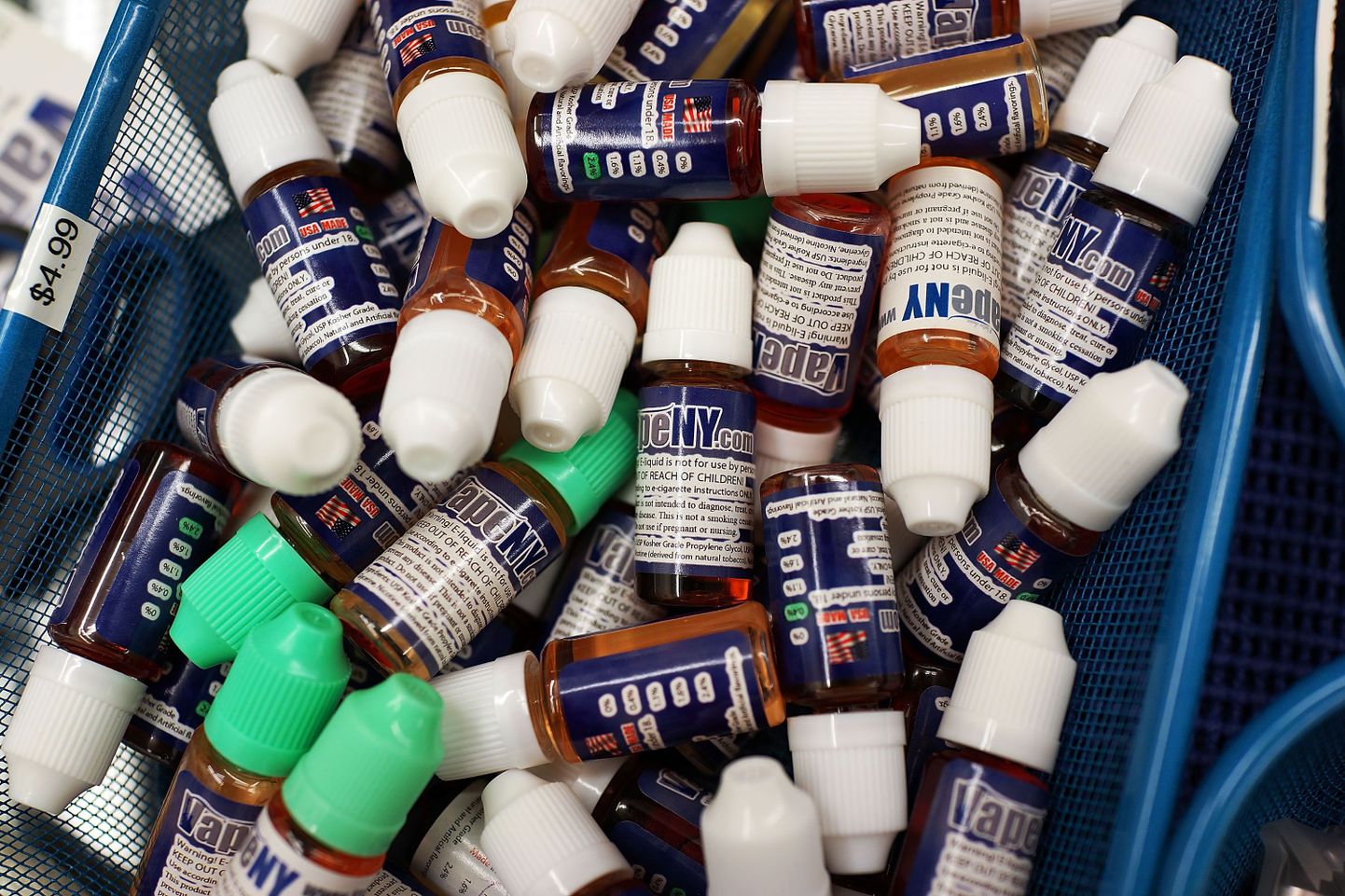
A race is on to illegally smuggle into Estonia e-cigarette cartridges containing nicotine, labelled locally as medicine.

A race is on to illegally smuggle into Estonia e-cigarette cartridges containing nicotine, labelled locally as medicine.
Right now, Estonia allows sales of nicotine-free e-cigarette cartridges, gaining widespread popularity. Cartridges containing nicotine, however, are medicinal products only to be marketed with sales permits.
According to Margit Plakso, head of marketing authorisations at State Agency of Medicines, no-one has applied for medicament sales permits of nicotine cartridges in Estonia. At the same time, illegal attempts are underway to bring such products into Estonia.
«A problem exists both with postal items and customs control at the Eastern border,» said Piret Tinkus, customs administration specialist at Tax and Customs Board (MTA).
For instance, MTA employees have repeatedly discovered cartridges without labels, lacking information on the ingredients thereof.
«At the Eastern border, in the past months, there have been two major dispatches of cartridges, which have been halted. With postal parcels, the main problem has been the lack of required labelling, wherefore these products are being sent back,» said Ms Tinkus.
Dozens of dispatches a week
Such postal and courier dispatches, discovered by MTA, come about 15-20 a week.
MTA confirms to act according to Health Board information: when e-cigarettes are meant for cure of nicotine addiction and/or use with cartridges with nicotine content, they fall under the category of medical device. A medical device has to conform to requirements of Medical Device Act and must have been introduced to EU market pursuant to requirements.
If a liquid cartridge does not contain nicotine, it is not a medicinal product, there being no restrictions on its marketing and orders via Internet.
However, MTA points out that e-cigarettes cartridges ordered (with no nicotine) will have to carry the following information: name of product, list of ingredients, series/batch number, «use by» date, as well as name and contact data of producer.
«Cartridge labels may not be removable. Should the abovementioned data be missing or be easily removable, doubts may arise regarding nicotine content and the postal parcel may not be delivered,» said Ms Tinkus.
Internet orders for medicines are available via pharmacies with Internet pharmacy licences from State Agency for Medicines. The existence of such activity licences may be verified by visiting the State Agency for Medicines website. It is forbidden to order medical products from outside the European Economic Area.
EU lenience
EU is discussing a new tobacco products directive, pursuant to which e-cigarettes with nicotine contents may be labelled as tobacco products. At the same time, the directive will not apply to non-nicotine e-cigarettes. When e-cigarettes become tobacco products, it will mean that shopping centres may start selling nicotine-filled cartridges without permits from State Agency for Medicines.
Health officials and some school directors are pointing out that, at the first glance – outwardly – it is difficult to tell the difference if a minor, for instance, is puffing at a nicotine-filled e-cigarette or not. Nicotine-free and nicotine-filled cartridges can be differentiated either by labelling or by laboratory tests.
«When it comes to the new tobacco products directive, marketing of products with above-norms nicotine content should continually fall under medicinal products,» explained Ivi Normet, deputy secretary general for health in Ministry of Social Affairs.
Pursuant to new tobacco products directive, products with low nicotine content may be sold as consumer goods – provided they carry warnings of health hazards.
«In Estonia’s statements regarding the draft, we do not support labelling of low nicotine products as consumer goods; we are of the opinion that products with nicotine content, not labelled as medicines, should come under the same requirements as are applied to tobacco products regarding ingredients and attractiveness [of packaging],» added Ms Normet.
It will be up to member states, however, to determine the restrictions for public sales display and use of such products. That will not be regulated on EU level.